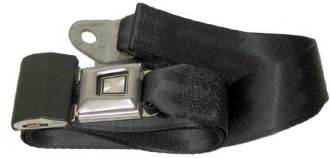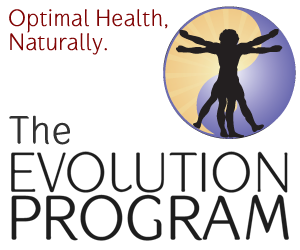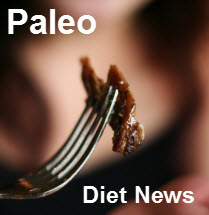Does Cold Therapy Increase Body-Fat?
When it comes to Cold Therapy, some people might well be worried about the possibility of cold temperatures causing an increase in body-fat, to act as insulation against the cold. But does cold therapy increase body fat?
ong>

Seat Belt Signs Cause Turbulence
In another short but sweet article by Ray Cronise of the Thermogenex blog, entitled “Fasten Your Seat Belts…”, Ray addresses this issue:
“I fly a lot and on my recent trip to California, the fasten seat belt sign came on and within a few minutes, the plane ride became bumpy. The Captain announced over the intercom that he was going to asked the (uniformed) flight attendants to stop service until things cleared up. The sign went off a while later and peanuts, pretzels, and drinks were flowing (I resisted the urge). It happened more than once on this particular trip.
I couldn’t resist commenting to the Captain as I left the plane, “you might want to get that fasten seat belt light checked. Every time you turned it on, the plane began to shake. It might be some sort of short circuit with the control system.”
Correlation of two events is something that often begins our magical quest of discovery, but in science we have to eventually prove the cause and effect relationship to verify our new theory. I would say that one of the most common questions I am asked is whether or not cool exposure is going to lead to our bodies actually storing more fat for insulation.”
I like the little example story here. It’s funny how cause and effect can be totally reversed, or entirely fabricated in our minds. It sounds funny, in the way that Ray recounts this example, but to a person who has no knowledge of planes or turbulence, this kind of correlation observation is entirely possible.
“It’s a reasonable question, but I don’t think there is much
worry.
First, Humans aren’t hibernators or even pseudo hibernators (e.g. bears) and so we don’t hunker down for the winter. There is a lot of speculation about people not burning as many calories in the winter vs summer, because they are “less active.” That is one explanation and there seems to be many that do put on the pounds in the winter months.
It’s not the full story.
In a future post I will discuss a little more detail on bioenergetics and the caloric balance between diet and exercise. You’ve heard me say it before, and I think the data firmly supports, you cannot out exercise your mouth. An incredibly demanding marathon, at about 2600 calories (energy in ¾ lbs of bodyfat), is no match for 2 trips to a fast food drive-thru a week.
Even if we take a step back from these hibernators and look at how the wider animal world copes with the winter months, it is far more common to “grow a coat.”
Humans do in fact have the direct evolutionary connection with our furry winter friends as we have all seen the pilo erector muscles (chill bumps) designed specifically to stand a fur coat on end and trap an insulating layer of air within. So while it might seem reasonable that we would become “fat” to insulate ourselves, if this truly was an insulating survival response, wouldn’t it stand to reason that we might also develop fur coats too?
While there is definitely support for larger deposits of subcutaneous fat providing more insulation in cold environments, there is no real hard evidence to suggest that we actually respond to cold by adding more fat. What there is plenty of support for is that we store excess energy consumed as fat and that fat happens to be a good insulating layer.
In one study, tropical and central Australian Aborigines were compared to a European white control group in their ability to withstand nighttime exposure to cold. As part of their custom, these tribes slept unclothed, between two fires, underneath a clear sky. The air temperature often fell to freezing or below. Surprisingly, they slept fine, chronically exposed to the cold. Of course the European control group didn’t sleep well at all, but their metabolic rate boosted 10-90% from shivering and muscle movement.
What was interesting is that the adaptation was not to develop more subcutaneous fat. It was the suppression of the metabolic increase and the drop of core body temperature by nearly 2 degrees. In fact, the tropical Aborigine tribe, nearly identical genetically, actually had greater skinfold measurements than the tribe from the cooler central region. Neither of the groups were “fat” in the sense of today’s standards (5’6″/170cm & 137lbs/62Kg), but there definitely seems to be a more active evolutionary response to severe chronic cold: core body temperature depression.
For most of us, we’ll never see this degree of chronic cold exposure. Even Wim Hof has a rise in metabolic rate and an increase in temperature on his ice exposures. Most of us have such a severe response to cold, it causes metabolic shock and our hearts race as our metabolic rates sore up to 500%.
This is why I believe that longer, intermittent exposures to cool environments are more tolerable and have better results. We’ll discuss the implications of BAT later. Activities like removing a few layers, exercising in cooler environments, and swimming are all ways to temporarily incite increased metabolic activity and with it increased caloric burn.
There is, of course, a demonstrated increase in appetite in response to cold, but does this nullify the thermodynamic advantage? Only if you eat more. Armed with the knowledge that you may be a little more hungry, you can avoid the trap. More importantly, you can strategically plan smaller meals before and after cold exposure to squelch the urge to over eat.
If you begin this transformation by establishing a healthy habitual foundation of diet and exercise and only after established, add the thermal loading, there will only be a small period of adaptation with the desire to overeat. Soon, you’ll be adding the excess caloric deficit to your success bucket and the urge to overeat with cool exposure will vanish.
Many times people over simplify in a wide, hand waving gesture, things that seem reasonable, but really aren’t. Certainly the diet and fitness arena is flush with those concepts. I haven’t seen any hard evidence that cold exposure = increase in subcutaneous fat, with the exception of the association of appetite in control groups that were not given instructions on dietary restrictions. At the same time, increased exercise of any type can also result in an increased appetite.
Ultimately, your success will be directly related to the overall caloric deficit you maintain. Any activity one engages in to increase that deficit will have a dramatic effect on the rate of fat loss. More important is what fuel you eat, especially the digestibility and availability of the caloric content within it, because our biggest evolutionary adaptation is being omnivores.
Throughout time we thrived, like all animals, in a world where calories were extremely scarce. Humans had the intelligence and reason to conquer and dominate caloric scarcity and now we live in a world of an nearly infinite caloric surplus within reach every day.
The question for each of us to answer is whether or not we can control and moderate our appetite and this desire for excess, or is this simply the beginning of an evolutionary dead-end for our species.”
What I take home from this, is that Thermal Loading doesn’t directly increase the amount of body-fat we carry, but the body-fat we already have does act as an effective insulating layer.
Ray said that exposure to cold temperatures increases appetite, so if a person is cold all of the time, and therefore eats more food than usual, then it’s possible that any excess calories could lead to weight gain. So even though the cold temperatures themselves don’t stimulate the automatic addition of fatty insulation, the increase in appetite certainly could. Which means….as Ray pointed out….that people who utilize Thermal Loading need to be aware of the increased appetite and plan accordingly to make sure they don’t turn a weight-loss opportunity into a weight-GAIN opportunity.
Ray also talks about eating appropriate fuel for our bodies. He hasn’t yet stated what that means to him, but I’m betting that a healthy diet based around the Paleo Template would probably fit the bill.
-
If you found this article useful, please click the ‘LIKE’ button below to share on Facebook. We also invite you to leave comments, and join the Paleo Diet News discussion!
Go to www.undergroundnutritionist.com, and download my 30-Day UN-Challenge eBook now……It’s a step-by-step guide to your personal health revolution.
Barry Cripps is a Paleo-based, Certified Nutrition and Wellness Consultant, who operates out of Bowling Green, Kentucky.
For more information please visit: www.undergroundnutritionist.com





